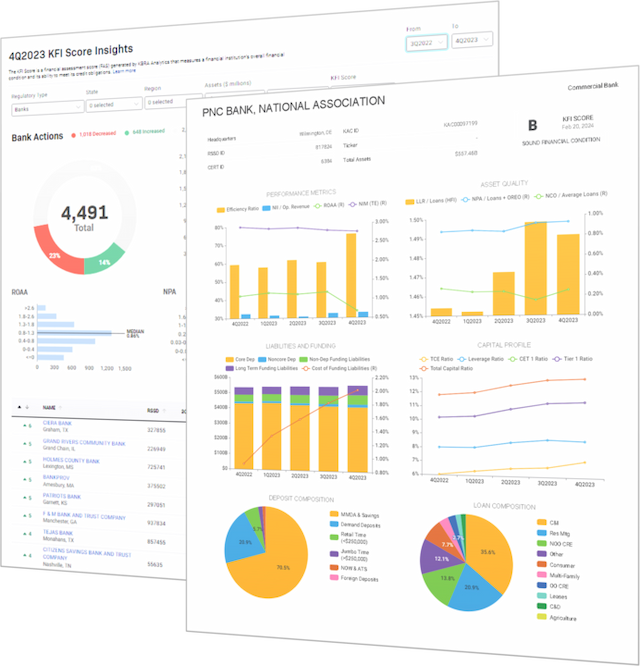KBRA Financial Intelligence
Banks With Highest Market Volatility Scores
By KFI Staff
The market-based model offers insights into the solvency of banking entities, serving as an early warning sign for potential defaults.
KFI’s Market Volatility Score (MVS) measures a bank’s stock volatility relative to its peers and is based in part on stock price, deposits, and market capitalization. The MVS measures public lenders from 0 (stable) to 100 (volatile) for real-time comparative peer tracking.
A look at Republic First’s MVS before its failure on April 27 showed a score of above 90 over the last seven months.
KFI Subscribers can see the top 10 banks with the highest MVS as of April 29 by accessing the template library.
KFI developed its MVS and Market Volatility Index (MVI) in response to client demand for timely risk assessments following the March 2023 bank runs. Both MVS and MVI assess risk on a 0 (stable) to 100 (volatile) scale. The new market-driven assessments provide real-time risk analysis that complement our quarterly KFI Scores.
Model highlights:
Based on three default risk models (Merton, KMV, and Bharath & Shumway).
Model inputs include, but are not limited to,
stock price, deposits, and market capitalization.
Assesses whether a bank’s default risk is above or below the average of its peer group.
Developed with contributors from New York University and back tested against more than 400+ public banks.
Interested in learning more about KFI’s Market Volatility Score? Please contact: [email protected]
